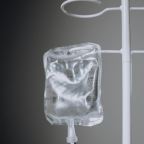
Do clear aligners straighten teeth as well as braces?
Clear aligners like Invisalign seem almost too good to be true. Instead of aligning your teeth with metal brackets and wires, they use clear aligners to gradually transform your smile.
As well as being very discreet, you can take your aligners out to eat and drink without any worry about damaging your braces.
Clear aligners are great at straightening teeth – Invisalign alone has transformed more than 11 million smiles worldwide. But do clear aligners work as well as fixed braces?
Invisalign vs fixed braces
Invisalign is arguably the UK’s most popular clear aligner. It’s more advanced than most other clear aligners, and it can compete with fixed braces on lots of levels.
Appearance
If you want to straighten your teeth discreetly, Invisalign is much less noticeable than fixed braces. Even up close, friends and colleagues may not notice that you’re wearing aligners.
Every 1–2 weeks, you’ll change to a new set of aligners, so you won’t need to worry about your aligners getting dull over time and becoming more visible.
You can keep your aligners clean using soap and water. Never use toothpaste – it’s slightly abrasive, so it might scratch your aligners and make them more apparent.
Fixed braces can be more discreet if you opt for clear ceramic brackets, but they’ll still be more noticeable than clear aligners.
The only alternative to Invisalign that’s even more invisible is lingual braces. Lingual braces are fixed to your teeth, but the brackets are attached behind them, so they’re super discreet.
Capability
Fixed braces have been around for decades, and they’re still an effective way to straighten teeth. They provide lots of control, so they’re suitable for a wide range of cases – even very complicated misalignments where teeth don’t bite together correctly.
Fixed braces are used to treat every NHS patient in the UK. They’re efficient, cost-effective and consistently achieve excellent results.
Some people wonder how clear aligners straighten teeth. They closely resemble removable retainers, which stop your teeth from moving.
Before you start your treatment, your orthodontist will take digital scans of your teeth, which they’ll use to create your 3D treatment plan. A series of clear aligners will be created to steadily move your teeth towards your goal.
Each set of aligners won’t quite fit your smile, so they’ll put pressure on particular teeth, moving them into the desired position.
Invisalign can also treat a wide variety of concerns, from simple crowding to bite problems. However, there are a few scenarios where fixed braces might be more efficient, for example, if your teeth are very rotated.
Neither option is consistently quicker, and they can both achieve amazing results.
Experience
Many people choose Invisalign because it’s removable. You can take your aligners out for up to four hours every day, so they won’t interfere with eating out or drinks with friends.
You can also remove your aligners to brush and floss your teeth as normal. You won’t need to navigate brackets and wires or worry about food getting caught in your braces.
This flexibility is a plus for most, but some people prefer the security of a brace that’s fixed in place. You won’t need to remember to take it out, and there’s no risk of you forgetting to wear it or losing it in a restaurant.
When you first start wearing braces, you might find your teeth ache as they begin to straighten. This could happen regardless of which appliance you choose, and it’s completely normal.
It will take you a few days to adapt to braces. Invisalign is less likely to rub and irritate your gums and the inside of your mouth. However, clear aligners are more likely to give you a lisp. Again, these problems are usually temporary, and most people adjust quickly.
Whichever type of brace you choose, you’ll need to wear retainers after your treatment to keep your teeth straight. Retainers will hold your smile in its new position indefinitely, providing you follow your orthodontist’s instructions.
If you’re undecided about clear aligners or fixed braces, book a consultation with a specialist orthodontist. They’ll be able to discuss the pros and cons of each option for your particular case.











